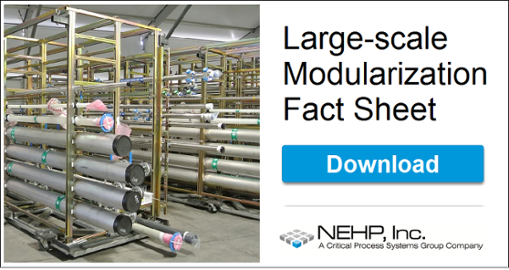/8-wastes-of-lean-transportation-waste.png?width=276&name=8-wastes-of-lean-transportation-waste.png) Transportation Waste in Construction
Transportation Waste in Construction
Transportation waste in Lean construction is defined as the unnecessary or inefficient movement of any materials, inventory, supplies or personnel related to a construction project.
In determining what is necessary versus wasteful transportation, it's important to identify whether the associated time, resources and energy that goes into a specified transportation activity are actually necessary to improve the final product or outcome.
Anything that is not necessary for improvement is seen as waste.
/construction-transport.jpeg?width=1280&name=construction-transport.jpeg)
CAUSES OF TRANSPORTATION WASTE
In the context of Off-Site Manufacturing (OSM), transportation is highly critical to the success and timely completion of construction project schedules. In most cases, transportation waste is caused by inefficient routes or inefficient motion during the actual transportation process. Less apparent however, is that transportation waste can originate much earlier in the planning process.
For example, as modular skids and components are assembled in an off-site facility, any miscalculations in procurement of materials (or missteps in the planning process in general) can translate to unbalanced timing and size of shipments to the job site. Such disruptions to the process flow can result in unintended management, transportation, or storage of inventory at temporary staging areas prior to being received on-site. And for every additional activity that's required to manage a component en-route to project completion, there is an equivalent cost to the project budget/schedule.
In short, transportation waste is often caused by improper timing and quantity of items in transit, as well as any inefficiencies that may be introduced along the route.
EFFECTS OF TRANSPORTATION WASTE
Transportation waste leads to lost time, energy, labor, money and more. Furthermore, additional wastes may develop from the lost time and labor such as production and inventory bottlenecks, damages related to overloading or under-loading transportation vehicles, and even assembly/install errors further downstream in the production process.
SOLUTIONS TO TRANSPORTATION WASTE
A natural tendency to combat transportation waste is to try to increase the amount transported for each trip that is made. Lean production indicates that this theory is flawed and can lead to further waste. As mentioned above, attempting to overcompensate in the transportation process can create additional storage challenges, and bottle-necking of components and processes.
Instead transportation waste is best fought at the planning level through various lean practices:
Just-in-time delivery (JIT) requires careful alignment and balance between project items that are considered "long lead" and those that are more readily available. As a result, specialized Supply Chain Management (SCM) personnel are required for ensuring that all materials are present and readily available when needed. This means that the SCM must factor lead times into the process, creating a system where materials are pulled, rather than pushed through the process. This way, JIT Delivery reduces the potential for inefficiencies, gaps, or delays to arise in the transportation process.
Similarly, value stream mapping can help solve transportation lean waste simply through awareness. VSM involves the observation and identification of non-value adding activities throughout entire processes. If problems or inefficiencies are being identified in transportation activities, VSM can help isolate the offending factors and eliminate or resolve them through continuous improvement.
Finally, a central integration facility for off-site manufacturing is critical to easing the uncertainties of many different and disparate material vendors and delivery schedules. Through a central integration facility, most transportation activities from the simple movement and transportation of individual items, to large-scale deliveries, can be better timed, managed and controlled by dedicated construction management personnel.
CONCLUSION
Combining Lean construction principles with OSM not only helps to eliminate transportation waste, but it's an overall formula for enhancing traditional EPCM and project delivery methods.
When applied to the construction industry, this formula promotes efficient and collaborative work flows among all parties in the production process. From delivery drivers, to vendors to stakeholders, the lean practices mentioned above can dramatically reduce operational inefficiencies, engineering redundancies, and transportation, labor, and material waste while improving overall construction productivity.
If you would like more information about how we can help you with construction productivity improvement, please feel free to access our construction integration and large-scale modularization fact sheet below:
